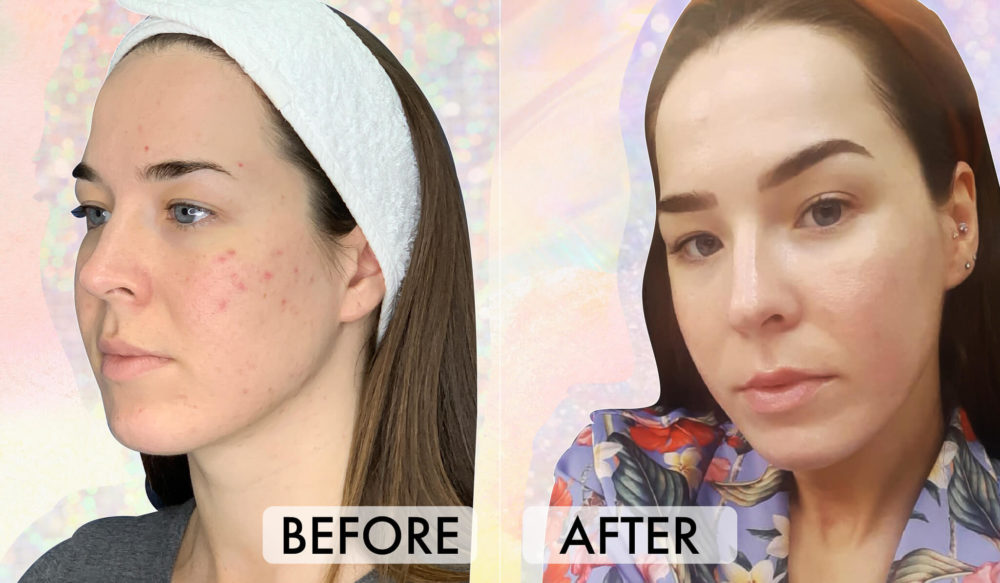No Mints Needed: How To Get Rid Of Bad Breath
 via Giphy
via Giphy
While bad breath isn’t the hottest topic, we’re here to tell you something: it happens. Yes, it can be a bummer, but it’s merely a request from your body for a lil’ mouth-care time. Unfortunately, most of us autopilot through our morning and nighttime oral routines, which means we’re often not stepping up our game in this area. We asked the experts for the 411 on bad breath and oral hygiene, and they delivered tons of clever tips for minty-fresh mouths. Here’s what they had to say.
The Tea on Oral Hygiene
 via Giphy
via Giphy
It’s a no-brainer, but poor oral hygiene leads to bad breath. When you don’t brush, rinse, and floss consistently (and correctly), the bacteria in your mouth begins to build up. Neglecting your mouth can eventually turn these stubborn layers of bacteria into plaque, which carries an odor and can cause bad breath.
Like all the medical movies say, prevention is easier than finding the cure. That means avoiding the growth and accumulation of plaque in the first place. Here’s where a simple brush-floss-rinse routine steps in. It’s pretty basic, but by thoroughly cleaning your mouth daily, you don’t give bacteria a chance to fester on your teeth, gums, and tongue. By canceling it from the get-go, you ensure that your mouth stays fresh AF – without ‘em mints.
Before we kick it off, meet the experts piloting our dental mission: Dr. Rifkin, a celeb dentist (and the man behind Chrissy Teigen’s smile), and Dr. Ghalili, a cosmetic dentist based in NY.
Step #1: Brush, Floss, Scrape, Rinse Daily
Fun fact: your dental mission should be performed in a strategic order for best results.
1. Brush up: To loosen and remove any food particles or plaque from the surface of your teeth and gums, brush your teeth for two minutes. Do this twice a day with your fave podcast playing and hit as many of hard-to-reach crevices as possible.
2. Floss: Now that all the surface layer debris is out of the way, floss between your teeth to get rid of anything stuck between your teeth. Dr. Rifkin says, “Flossing is the most important oral hygiene technique to eliminate bacteria from plaque and food particles caught between the teeth, which are the most common area for decay, gingivitis, and bone loss.”
3. Use a Tongue Scraper: Dr. Ghalili explains, “Tongue scraping is the method to remove the remainder of the food, possible bacteria, and dead cells from the surface of the tongue and therefore out of the body.” He adds, “Tongue scraping is nothing new and has been a part of Ayurvedic practice since ancient times. A scraper is designed to fit the anatomy of the tongue and scrape off bacteria and flora on the tongue that can produce volatile sulfur compounds.”
4. Rinse: Last but not least, give your mouth a good rinse to remove all the particles, germs, bacteria, or anything brushing and flossing might have missed.
We get it; it’s time-consuming, but trust us, it’s the answer.
Posts You'll Love:
Tip 1: Hydrate, Hydrate & Hydrate
 via Giphy
via Giphy
You’ll want to stay well hydrated to achieve #dewyskingoals, but eight glasses of water (minimum) benefits your mouth too. If you’re not hydrated, your mouth doesn’t produce enough saliva, and saliva is what cleanses your mouth from odor-causing bacteria. To avoid a dry mouth and bad breath, drink up whenever (wherever!)
Tip 2: Go Easy On The Sugary & Fried Stuff
Traditional Chinese medicine states that improper digestion can also attribute to bad breath. Basically, if your body’s having a hard time breaking down certain foods, bacteria’s growing simultaneously within your mouth. The solution? Cut back on any hard-to-digest food items – pizza included – greasy or fried, along with sugary treats. Unfortunately, sugar’s a major culprit of bad breath as the bacteria in your mouth love feasting on it.
Tip 3: Take Care Of Your Toothbrush
Chances are you store your toothbrush in your washroom, where you also do your number ones and twos, which is a prime breeding spot for bacteria. Our advice? Invest in a toothbrush holder or case. Oh, and since your toothbrush is a daily-use tool, replace it regularly (every 3 months).
We’ve summarized a few other tips that’ve helped us deal with #BadBreath troubles:
- Try to breathe through your nose: Try to avoid breathing through your mouth (if you can) as it can lead to a dry mouth, which reduces saliva production that can help to fight bacteria that cleanses your mouth.
- Gargle Salt Water: Salt shouldn’t be limited to the kitchen. Salt has powerful antibacterial properties and helps fight any lingering bacteria while healing any cuts or ulcers in your mouth.
- Chew Sugarless Gum: This increases the amount of saliva in your mouth and gradually reduces plaque buildup, reducing the likelihood of tooth decay.
If you’re interested in keeping your mouth squeaky clean, check out the common oral hygiene mistakes you should be avoiding.
Disclaimer: Every product we review has been independently selected and tested without bias by our editorial team. Although some brands allow affiliate links, we never take payment to review products, so we may earn a commission if you purchase a product by clicking on one of our links.























Leave a comment